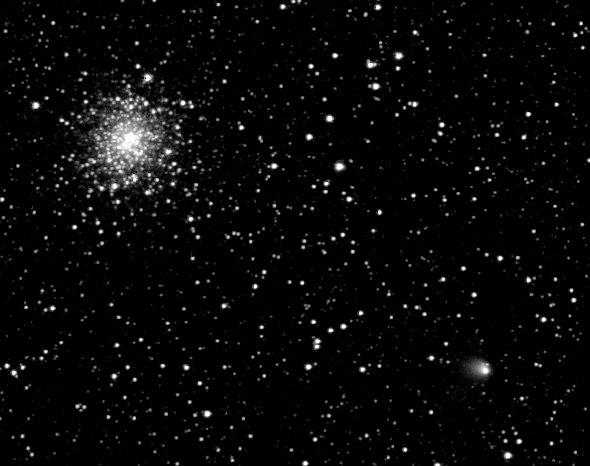Rosetta’s Comet Wakes Up
Far across the solar system, the Rosetta spacecraft is on its way to rendezvous with the comet 67P/Churyumov-Gerasimenko. It’ll arrive this summer and start mapping the ice ball in detail, and then, in November, it will send a probe (called Philae) to actually land on the comet’s surface!
Right now, though, the European Space Agency probe is still a few million kilometers from the comet. It’s busily snapping photos to examine the comet’s behavior as well as get more accurate positions for it on approach. As it happens, during the time period between March 27 and May 4, 2014, the comet woke up—although it’s still 600 million kilometers (370 million miles) from the Sun, it’s gotten warm enough that the ice on the surface is sublimating (turning directly into a gas). Rosetta had a front-row seat, and took some great images of the event, which were made into this very cool animation:
Mind you, the solid part of this comet (made of rock and ice) is a mere 4 km across, and a tiny dot as seen by Rosetta from that distance. But once the ice sublimates it expands, surrounding the solid nucleus as a fuzzy cloud called the coma, which gets blown back by solar wind and light pressure to form the tail. By the last shot seen here, the coma and tail are about 1,300 kilometers (800 miles) across.
By the way, that knot of stars on the left is the globular cluster M107, a veritable beehive of stars located about 20,000 light years away. It just happened to be in the shot at the time and adds a little sparkle to it. If you want to see a lot of sparkle, check out the image Hubble took of it back in 2012.
I’ve written about Rosetta and 67P/Churyumov-Gerasimenko many times before, so here’s a list of posts to get you up to speed and ready for this summer’s cometary encounter:
Rosetta Takes Some Home Pictures (my single favorite picture of Earth ever taken!)
Rosetta: Mission to Land on a Comet
Rosetta Rises and Shines
Rosetta’s Stunning Mars
A Distant Target for Rosetta
Rosetta’s Cometary Goal Now in Sight
Moonrise From Space (incredible picture)


